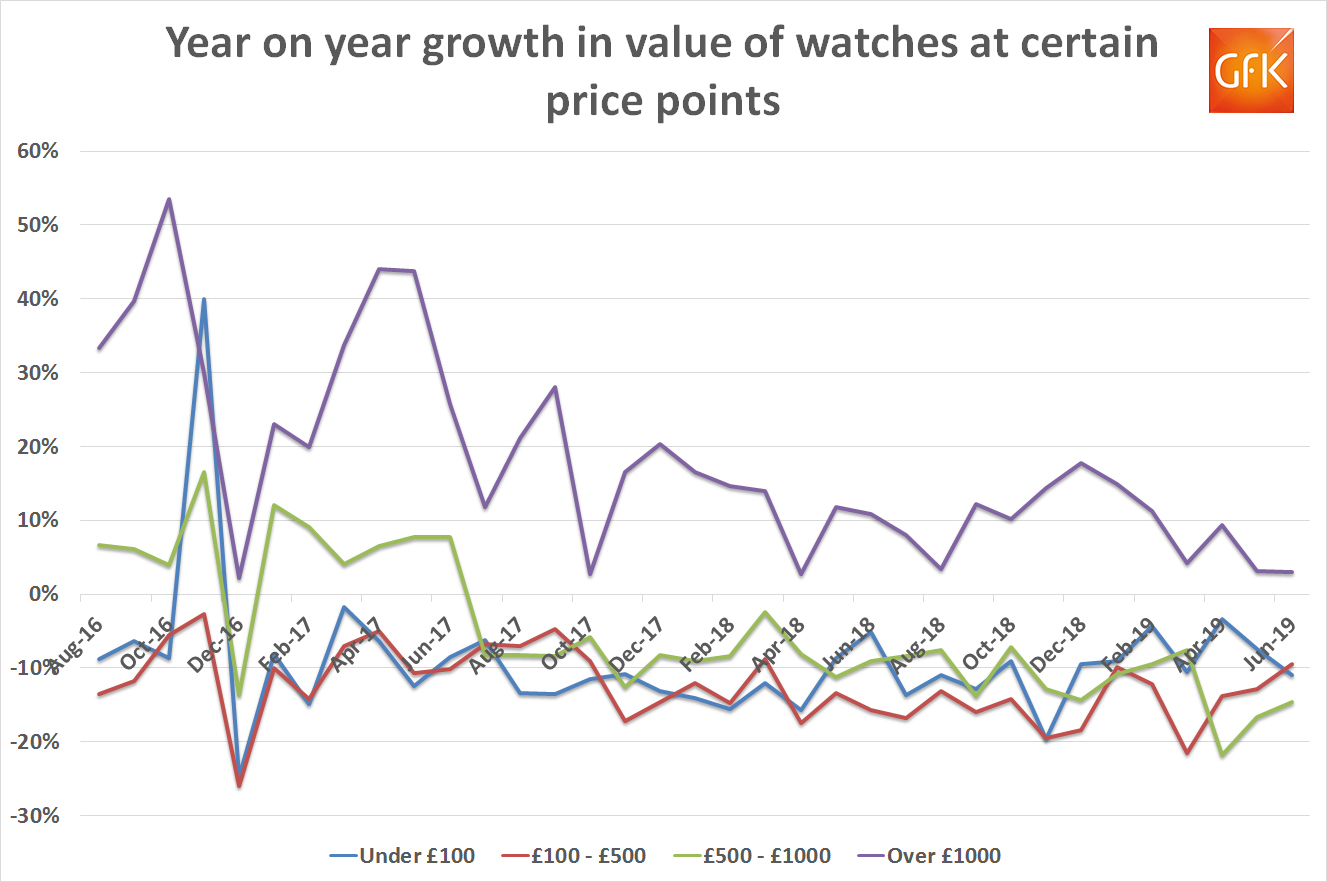A disorderly Brexit wiping another 20% off the value of the pound (as some economists predict) could give jewellers the sort of short term price advantage over the rest of the world that the initial vote to leave delivered.
August to November of 2016, the referendum year, saw sales of watches priced at over £1000 rise by almost 50% in some parts of the country. It was a cash splurge that many luxury retailers put to good use with major refurbishments and expansions that have helped them build on those gains every since.
Barring a hard Brexit sparking a repeat, it appears the watch market in Great Britain will be broadly flat year-on-year, a solid result after the golden years of 2016 to 2018.
GfK’s monthly data shows that the first six months of 2019 saw the value of watch sales across the country rise by just 2.1%, and even that growth is slowing as we move into summer.
London is struggling most to beat last year’s records, and has seen the value of watch sales at all price points drop by 4% in the six months to June, and is down year-on-year by over 12% in the month of June alone.
The rest of Great Britain has closed the gap on London, with sales growth of 8.8% in H1.
There is no comfort in sight for brands at the volume end of the market. Entering a fifth straight year of declines across all price points under £1000, the pain is continuing into 2019 with the value of sales slipping by an additional 10%. GfK does not track sales of brands selling direct to consumers online, so the drop may be slightly exaggerated by the methodology of the research with sales shifting rather than evaporating.

